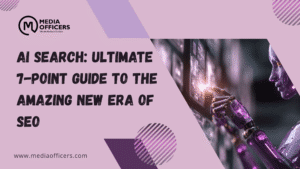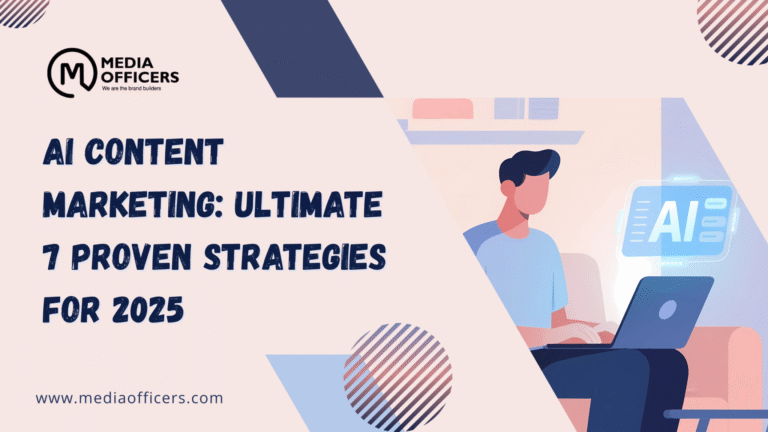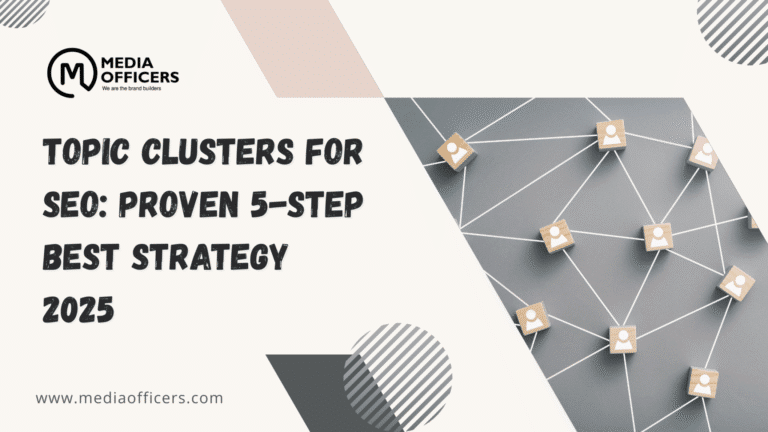AI search is not the end of SEO; it marks a new era where how information is discovered and how machines decide what to trust matters as much as traditional ranking signals. Some claim SEO is dead, others say nothing has changed. The truth is that search is evolving fast, and fundamentals still matter but the rules are shifting toward relevance, accuracy, and credibility.
Myth 1: GEO is just SEO with a new name
Reality: The fundamentals overlap, but the target has changed. SEO is about ranking webpages. AI search is about being cited, trusted, or chosen inside an answer. You’re not trying to win Position 1 you’re trying to show up correctly when AI summarizes, recommends, or decides. That means focusing less on “ranking signals” and more on relevance, fact accuracy, clarity, and credibility/trustworthiness. It’s not how high you appear it’s whether your information is reliable enough to appear.
Myth 2: As models get smarter, they’ll figure it out on their own
Reality: Even AI needs help separating fact from fake. Large language models aren’t all-knowing they’re pattern matchers. LLMs predict likely answers based on what they’ve seen, not what’s true. If your brand’s information isn’t clear, current, and consistent across the web, AI can easily confuse you with someone else or repeat outdated or inaccurate data. As AI search becomes the default interface, clarity and factual integrity matter more than clever phrasing or long-form storytelling. Your job isn’t to trick an algorithm it’s to make your truth unmistakable.
Myth 3: Prompt tracking and AI visibility tools are useless
Reality: Early? Sure. Useless? No. We’re in the dial-up era of AI analytics. The data is noisy, the samples small, but it’s the start of understanding how AI systems surface your brand. Just like keyword tools in the early 2000s, today’s AI visibility dashboards are rough prototypes. The goal isn’t precision yet it’s pattern recognition. This is where trust signals and consistent data begin to show their value.
Myth 4: Off-site mentions don’t matter anymore
Reality: They matter more than ever. AI systems pull from trusted ecosystems review platforms, data hubs, industry directories, public databases, and social communities. Keeping your facts, descriptions, and ratings consistent everywhere should help AI identify and recognize, verify, and quote your brand. What matters isn’t branding jargon, but whether your information is consistent and reliable across the web. The clearer and more consistent your public footprint, the more confidently AI systems can include you in their answers.
Myth 5: Search engines aren’t going anywhere
Reality: Search engines might stay, but the interface is changing fast. We’re evolving from the blue links of search to Answers (information), Summaries (condensed explanations), and Actions (things the AI actually does for the user). That doesn’t kill SEO but it does radically change the old playbook. In a chat-first world, the question isn’t “What’s my rank?” It’s “Does the AI platform quote me and does it quote me correctly?”
Myth 6: All AI search tactics are spammy
Reality: Spam exists everywhere. That’s not the story. The real story is that AI search rewards clarity, consistency, and credibility. Spammy Reddit posts and auto-generated “best X for Y” listicles might trick a model for a week, but AI platforms like search engines get smarter about trust signals. Focus on accurate facts, current data, and clear, well-structured content. Those are the assets AI can safely lift and cite.
Myth 7: SEO and AI search are mutually exclusive
Reality: They’re closely connected. The same crawlability, authority, and coherent content that power SEO also feed AI retrieval. The difference now is that optimization extends beyond search engines to AI platforms where people seek information. Solid SEO gets you discovered. AI search optimization makes sure you’re understood and cited correctly.
AI search isn’t the end of SEO – it’s its next era. You still need crawlable content, credible sources, and human-first writing. But you also need clarity, factual alignment, and visibility across the sources machines trust most. The winners in the next landscape will treat their information as infrastructure something AI systems can read, quote, and trust. Because when search becomes a conversation, the brands that get cited are the ones that sound like the source of truth.
STEP-BY-STEP SEO STRATEGY TO EXECUTE
1. Analyze Search Intent & Keywords
The first step is to determine the primary search intent behind the topic. For AI search, the audience often seeks guidance, best practices, and a framework they can apply. Identify a clear primary target keyword to own in this case, the exact phrase AI search. Then map 3–4 secondary keywords that support the topic and mirror user questions. Examples include trust signals, credible sources, content clarity, and AI visibility dashboards. Use these naturally in headings and body text to reinforce relevance.
Structure your article around user questions. Each section should answer a specific query with concise, evidence-based information. This isn’t about tricking an algorithm; it’s about delivering a trustworthy, human-first explanation that machines can read and users can trust.
2. Craft Core SEO Elements
SEO elements create the initial signal for both humans and AI systems. Follow these guidelines to ensure your core elements align with the new era of discovery.
- SEO Title Checklist
- Primary keyword at the start of the title: AI search
- Include a power word: Ultimate
- Include a sentiment word: Amazing
- Include a number or year: 7-Point
- Keep length under 65 characters
- Meta Description (150–160 characters): include the primary keyword, a value statement, and a clear CTA. Example: AI search is reshaping SEO’s next era. Learn how clarity, credibility, and consistent facts across trusted sources unlock AI answers. Start optimizing now.
3. Publish, Monitor, & Iterate
Beyond publishing, you must monitor how AI systems surface your content. Use AI visibility dashboards and track patterns rather than chasing perfect precision. Look for signals like mentions in trusted data hubs, consistency across platforms, and patterns indicating your content is being cited in AI summaries or answers. As data matures, refine your content to boost clarity and alignment with real-world facts.
Also, establish a cadence for updates. AI systems benefit from fresh, accurate information. Regularly audit your facts, dates, and sources across your site and third-party listings. This isn’t a one-off optimization; it’s an ongoing infrastructure effort.
Frequently Asked Questions
What is AI search and how does it differ from traditional SEO?
AI search describes how AI systems surface, summarize, and cite content to answer user questions directly. Unlike traditional SEO, the focus shifts from scraping top positions to being the trusted source cited by AI in responses. The emphasis moves to credibility, accuracy, and consistency across the web.
How can I improve my chances of being quoted by AI search?
Prioritize clear, factual content that is consistently presented across reputable sources. Ensure your brand is mentioned in trustworthy ecosystems and maintain updated, accurate data in public directories, reviews, and data hubs. Build a well-structured, human-friendly page that directly answers common questions and links to credible sources.
How do I measure AI search visibility?
Use AI-focused dashboards to observe pattern changes over time. Track how often your brand is quoted in summaries, the accuracy of the information AI presents, and whether AI references include your authoritative sources. Supplement metrics with human feedback on relevance and trust signals observed in AI-generated answers.
Should I still optimize for traditional SERPs?
Yes. Traditional SEO fundamentals remain foundational. Crawlability, semantic clarity, authority, and high-quality content still influence how AI reads and quotes your material. The best approach blends classic optimization with explicit efforts to improve credibility and cross-platform consistency for AI systems to rely on.
Conclusion: The era of AI search is a natural evolution of SEO. By maintaining strong crawlability and authority while prioritizing clarity, factual accuracy, and cross-platform trust, you position your brand for being cited, quoted, and trusted in AI-driven answers. The brands that succeed will treat information as infrastructure that AI systems can read, quote, and rely on transforming search into a conversation rather than a set of isolated links.





